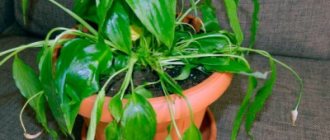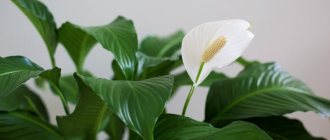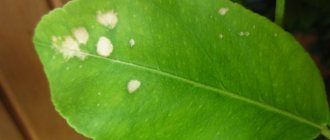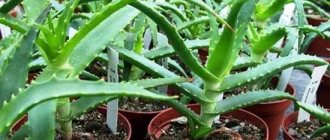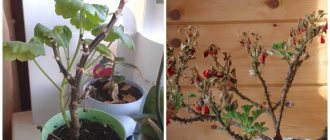Causes of homemade lemon diseases
Various diseases negatively affect the appearance of the plant and fruiting. Lemons are most often affected by diseases and pests:
- weakened by other diseases;
- for which proper care has not been established (watering, pruning);
Indoor lemon
- kept in unsuitable conditions (improper lighting, drafts, poor soil, poor temperature conditions).
Viruses, bacteria or pests may appear:
- from poorly treated soil,
- from a diseased cutting when grafting,
- while airing the room (happens extremely rarely),
- from sick indoor plants nearby.
Many lemon diseases can be cured, but there are also diseases that cannot be cured and the plant must be disposed of.
What we know about COVID-19
COVID-19 is an infectious disease caused by the coronavirus SARS-CoV-2. Discovered in China at the end of 2022, by May 15 it had infected 4.4 million people worldwide. Most of those with symptoms complain of fever, cough and difficulty breathing. Special medications and vaccines against COVID-19 have not yet been developed. However, virologist and head of the MIPT genome engineering laboratory Pavel Volchkov said that the first effective cure for coronavirus infection may appear in the fall.
In general, the Ministry of Health recommends the use of six drugs to treat coronavirus. these are favipiravir, remdesivir, umifenovir, hydroxychloroquine, azithromycin and interferon alfa.
Why do lemon leaves turn yellow?
Gooseberry diseases and their treatment
The leaves of indoor lemons turn yellow because:
- Incorrect lighting was chosen (direct rays of the sun provoke the appearance of burns, excessive shading, especially in the cold season, does not allow the plant to fully develop).
Lemon with yellowing leaves - Insufficient or excessive watering, which are equally dangerous for lemon.
- Violation of the usual temperature regime causes stress in the plant, which leads to negative consequences. Lemons develop well in the temperature range of 14-25 C0, but 20 C0 is ideal for them. During ventilation (especially in autumn or winter), it is recommended to remove the lemon from the room to avoid sudden temperature changes. Central heating radiators or other heating devices should not be in the immediate vicinity of the pot.
- Increased or decreased level of humidity in the room (optimally from 60% to 70%).
- Irrational or irregular feeding. Lemon needs nutrients, but too much of them is not good for your pet.
Rhinitis and food allergies
AR may be the result of a food allergy. In one study, it was shown that it develops in 35% of children with this condition. Among the main food allergens that provoke AR, scientists name peanuts, milk, shrimp and eggs. In Russia, the leading food allergens also include citrus fruits, chocolate, tomatoes, and strawberries. This highlights the need for allergy testing to guide allergen avoidance strategies.
But most cases of food-related allergic rhinitis are the result of cross-allergy. An example would be an allergy to apples in people with hypersensitivity to birch pollen. This phenomenon develops when allergens are structurally similar to each other at the molecular level.
Lemon leaf chlorosis
Diseases of clematis and their treatment - what causes flowers
Plant chlorosis is a disruption of the process of chlorophyll formation in leaves. The main sign of the disease is yellowed leaf blades and green veins.
Leaf chlorosis
The main cause of the disease is a lack of iron and magnesium.
Ways to combat chlorosis:
- Transplanting the plant into new soil and a larger pot;
- Spraying the leaves with Ferovit solution (1.5 ml per 1 liter of water);
- Fertilizing with magnesium sulfate;
- Washing the soil in the pot (water the lemon with warm water for 30 minutes until clear liquid flows out of the drainage holes). This improves the soil structure and its breathability. 30 days after the procedure, the plant is fed.
Lopinavir and ritonavir
A combination of antiviral drugs called kaletra is used to treat HIV. According to WHO, the use of the drug in combination with other medications is effective in the fight against coronavirus. At the end of January, the Ministry of Health included lopinavir with ritovinar in the list of drugs recommended for COVID-19 as antiviral therapy. As a result, the demand and sales of kaletra increased tenfold. Experts warn that uncontrolled use of the drug without a doctor's prescription can cause harm to health, including diarrhea and liver damage.
Chinese scientists have found that lopinavir and ritonavir are not effective in treating mild to moderate COVID-19. Taking medications does not improve the clinical picture; moreover, it may cause side effects. The experiment involved 86 patients, of which 34 people took a combination of lopinavir and ritonavir, and 17 patients did not receive any drugs. After two weeks, both groups showed similar results, but those taking the medications experienced side effects.
Why do lemon leaves curl?
One of the common diseases of homemade lemons is leaf curl.
Phlox diseases and their treatment: why leaves curl
Causes of the disease:
- 1) Violation of the rules of care (most often improper moistening of the soil and air).
- 2) Lack of mineral fertilizers (deficiency of calcium, boron or copper in the soil).
- 3) Lack of fresh air.
- 4) Damage to the plant by various pests (both on the crown of the tree and on the root system).
Important! Mineral fertilizers are applied very carefully, since their overdose has a negative effect on the plant.
Causes of lemon leaves falling off
The question “why does a lemon drop its leaves, what should I do” worries many plant growers. A common cause of homemade lemons dropping leaves is some kind of viral or fungal disease:
- Leaf mosaic (leaves change their shape, dark or light strokes appear on them, reminiscent of a mosaic, the plant stops growing). It is impossible to treat a diseased lemongrass; you can only prolong the life of the plant by regularly feeding and properly caring for it. Experts recommend destroying such a lemon so that the disease does not spread to other plants.
- Cancer of citrus plants (in the initial stages, the leaves and fruits become covered with brown spots, later the lemongrass takes on ugly shapes, the foliage falls off, and the tree dies). It will not be possible to revive a diseased tree, but to prevent cancer, it is recommended to spray the lemon with liquid copper fungicides.
- Tristeza (one of the reasons why a lemon sheds its leaves; in addition, the branches and bark gradually die off, and the tree dies). The disease is incurable and most often affects weakened plants.
- Anthracnose (leaves turn yellow and fall off, thin branches die, the tree may drop its buds, red spots appear on the fruits). Treatment: cut off dried branches, treat the plant three times with Fitosporin, a 1% solution of Bordeaux mixture is also suitable.
- Malsecco (leaves fall off, shoots from the tops begin to dry out, branches turn red when cut). The cause is a lack of lighting; from October to April, the plant needs lighting to increase daylight hours. Treatment with drugs is impossible. If normalizing the light regime does not help, then the plant should be disposed of.
- If affected by root rot, the lemon may also shed its leaves. If for this reason the leaves of a lemon fall off, then you know what to do: dig up the plant, wash and inspect the root system, and remove rotten roots. The lemon is planted in another pot in disinfected soil. For 12-14 days, do not water the plant, but only spray it with warm water and wipe the leaves with a damp sponge.
Let's sum it up
Both deficiency and excess of certain substances in plant nutrition are equally harmful. Therefore, regardless of the type of disease and the characteristics of its course, when using ready-made fertilizers, products and fertilizers, you must first read the instructions offered by the manufacturer.
If the cause of the development of non-infectious chlorosis cannot be determined and the deficient substance cannot be determined, the use of complex fertilizers in small doses is recommended. These products usually contain those substances whose deficiency is most common.
You can also use handy means for feeding. For example, the ash remaining after burning wood is ideal for flowers. It is rich in phosphorus, magnesium and iron. It can be mixed with soil or diluted in water for irrigation. You can also use water for irrigation after washing the cereals with it. Onion peels are also suitable, which must first be boiled in boiling water and allowed to brew for 2 hours. But we should not forget that with folk remedies, moderation in their use is important.
Sticky coating on lemon leaves
Sticky plaque not only spoils the appearance of the tree, but also inhibits its development.
Sticky spots on leaves
Reasons for the appearance of a sticky layer:
- inadequate care;
- excessive watering for a long time;
- the plant was attacked by scale insects;
- Aphids appeared on the lemon.
The first 2 factors are easily eliminated after studying the relevant information on proper plant care. Scale insects and aphids are pests that are difficult to control, but quite possible.
Note! Sticky golden resin on reddish-brown spots and cracks on the trunk and branches of a tree is a sign of homosis, the causes of which lie in a lack of potassium and phosphorus, an overdose of nitrogen or poor soil.
Dangerous symptoms
In some people, high blood pressure is asymptomatic, but in most cases the following symptoms are observed:
- weakness and fatigue,
- pressing or throbbing headache in the occipital and/or temporal part,
- nausea,
- dizziness,
- chest pain,
- noise in ears,
- shortness of breath during habitual physical activity,
- numbness of the limbs,
- blurred vision, flashing spots before the eyes,
- irritability,
- increased sensitivity to light (sometimes to sounds).
The appearance of even one or two of the symptoms listed above should be a cause for concern. Some people prefer to simply “endure” an episode of high blood pressure “so as not to be poisoned by all this chemistry” (that is, pills). But such manifestations cannot be ignored, since, as we said above, high blood pressure is fraught with a number of dangerous consequences.
Fighting yellow spots on lemon leaves
Lack of lighting, low air humidity, inadequate watering, sudden temperature changes and poor nutrition can cause yellow spots to appear on the leaves of homemade lemons. The same symptoms can be observed in some diseases:
- Scab or wart is a fungal infection of a plant, the main symptom of which is yellow spots on the leaves, gradually degenerating into pink-gray warts (growths). Orange spots appear on the fruits. Warts gradually spread throughout the plant, destroy the fruits, and can lead to the death of the tree. Treatment: treatment of the crown with a 1% solution of Bordeaux mixture, removal of affected branches, fruits and leaves.
- Infection with dark brown spot (the appearance of irregularly shaped yellow spots on leaves) is incurable. The diseased plant must be destroyed to avoid spreading the disease to others.
- With phyllostictosis, brown specks with rims appear on the lower leaves.
- Late blight is characterized by swelling of the bark and oily spots on the foliage.
Phyllosticosis and late blight can be cured with fungicidal drugs.
Symptoms of tonsillitis.
A symptom that combines both types is pain in the throat. The pain can be both severe and tolerable. The patient experiences severe discomfort while eating and swallowing.
Sore throat is much more severe than a chronic disease and is accompanied by the following symptoms:
- increased body temperature (up to 40°C);
- very severe sore throat;
- enlarged lymph nodes;
- accumulations of pus on the tonsils (plaque, pustules);
- enlarged tonsils;
- headache;
- weakness.
The symptoms and treatment of chronic tonsillitis are somewhat different from the manifestations of tonsillitis. With a chronic disease, the temperature remains at 37°C. A sore throat, cough, and bad breath are added. There is a white coating on the tonsils. The symptoms are less pronounced, since the course of the disease itself is characterized by remissions and exacerbations. A patient suffering from a chronic form of the disease loses his ability to work, gets tired quickly, and loses his appetite. Often a person suffers from insomnia.
Drying tips of leaves and white spots on them
The tips of the leaves may dry out when:
- unsuitable microclimate;
- unbalanced lighting;
- mineral starvation;
- incorrectly selected soil for planting;
- infection by parasites.
Lemon leaves covered with a white coating indicate the appearance of a whitefly butterfly.
Whitefly butterfly
Detecting a parasite is easy:
- after shaking the branches, the butterflies take off;
- grayish-white formations resembling mold appear on the leaves and shoots;
- affected leaves curl, turn yellow and dry out.
Ways to control insects:
- a few butterflies are destroyed by washing the leaves with gauze soaked in a soap solution;
- Sticky fly strips are hung near the tree;
- spray the plant several times with a sweet solution (2 tablespoons of sugar dissolved in a glass of water);
- a large number of insects can only be defeated with the help of special chemicals.
Washing the tonsils.
The procedure for washing the tonsils has a great positive effect, as a result of which pus is released from the lacunae and the medicine is administered. There are several ways to carry out the procedure.
The oldest, so to speak, ancient method is sanitation with a syringe. It is used quite rarely due to its low efficiency and traumatic nature, compared to the advent of more modern methods. The syringe is used when the patient has a strong gag reflex or very loose tonsils.
In other cases, a more effective method is used - vacuum rinsing with a special attachment of the Tonzillor apparatus.
But it is not without its drawbacks:
- the container into which the purulent contents of the tonsils are “pumped out” is opaque, and the doctor cannot see whether the rinsing is complete;
- The design feature of the nozzle is such that when the pressure necessary for complete rinsing is reached, the nozzle can injure the tonsils.
Our clinic for the treatment of tonsillitis offers its patients an alternative painless option for washing the tonsils using the improved “Tonsillor” nozzle - this is the “know-how” of our clinic. There are no analogues of our nozzle in other medical institutions in Moscow. It eliminates the disadvantages of a conventional nozzle: the rinsing container, which is suctioned to the tonsil, has transparent walls, and the otorhinolaryngologist can see what “comes out” of the tonsils. This eliminates unnecessary manipulations. The nozzle itself is non-traumatic and can be used even by children of school age.
Why doesn't lemon bear fruit?
Not all lemon trees bear fruit. For many owners, this is simply a beautiful decorative decoration for their home. Why lemon does not bear fruit, the main reasons:
- 1) the plant grew from a seed and was not grafted;
- 2) the tree is not grafted correctly;
- 3) violation of comfortable living conditions (temperature changes and low humidity);
lemon blossom - 4) there are too many flowers and fruits on the tree (experts advise removing excess ovaries, following the rule: “10 leaves - 1 flower”);
- 5) untimely fertilizing (forces the lemon to lose color);
- 6) the plant is sick or infected with parasites.
What to do to make fruit appear on a lemon:
- Provide appropriate conditions for full growth and development.
- Fertilize regularly (in spring and summer 2 times a month, in autumn and winter - monthly).
- Graft the plant correctly (graft a strong tree whose bark is well separated from the wood). For the operation, use a clean and very sharp knife. To achieve the best possible alignment of the branch and petiole, the grafting site is tied tightly and tightly. The result will be judged after 3 weeks.
- Cure diseases and get rid of pests.
- Form the crown so that by the age of three it consists of 7 main branches (at the same time, try not to constantly shorten the tips of thin branches, since it is on them that flowers appear).
- The procedure of tightening the branches is carried out. To do this, in the spring they are tied together with soft wire to concentrate nutritional reserves in them for the next year.
Important! Under optimal conditions, the lemon will bloom 2-3 years after grafting.
How does high blood pressure manifest?
The danger of hypertension lies in the fact that high blood pressure affects internal organs over the years, but does not manifest itself externally. Hypertension has no specific signs: all complaints arise only when the disease affects various organs and systems of the body. With a prolonged increase in blood pressure, the following may appear:
throbbing headaches; dizziness, loss of coordination; impaired memory, ability to concentrate; facial redness; increased sweating; fragility of blood vessels, nosebleeds; blurred vision, flashing “spots” and “floaters” before the eyes; tinnitus; irritability, unreasonable feelings of anxiety; weakness, fatigue.
When should you see a doctor?
Hypertensive patients need to undergo regular medical examinations to monitor the course of the disease and assess the risks of complications. It is imperative to seek medical help in the event of a hypertensive crisis - a sharp rise in blood pressure to high values. The condition is accompanied by symptoms such as:
- headache, dizziness;
- difficulty breathing, feeling of lack of air;
- nausea, vomiting;
- cardiopalmus;
- chills, trembling, feeling of heat;
- heartache;
- muscle tremors, cramps;
- loss of consciousness.
An ambulance should be called immediately in case of acute pain in the chest, disturbances in speech, consciousness, facial expressions, movements in the limbs - these signs indicate myocardial infarction or stroke.
Lemon pests at home
Lemons, like other house plants, are attacked by various pests.
Description of signs of spider mite infestation:
- 1) yellow dots appear;
- 2) yellowing of the edges of the leaves begins,
- 3) the leaves roll into tubes,
- 4) cobwebs or cobweb nests appear in the leaf tubes.
Spider mite infestation
The parasite feeds on lemon juice, is very small and invisible to the naked eye, but causes enormous damage. Home and folk remedies are ineffective; they not only do not destroy the pest, but also allow it to live and reproduce unhindered. You can fight spider mites only with insecticidal preparations, for example, Fitoverm, Actellik and Demitan.
Signs of aphid infestation:
- leaf plates and young shoots are deformed;
- a sticky coating appears;
- on the back of the leaves you can see colonies of small green pests (adults turn black).
Aphids usually appear in the spring; insects use their proboscis to suck juice from leaves and young shoots. The parasites are very prolific: about 20 generations can grow in a season.
Aphids on a lemon branch
Among the traditional methods, treating the plant with an infusion of wood ash mixed with a strong soap solution is effective.
Mechanical removal of parasites brings a temporary effect, after which the insects resume their population.
Among chemical preparations, experts recommend using Fitoverm or Iskra Zolotoy.
Scale insects are one of the most difficult to eradicate pests that attack indoor lemons. Signs of scale insects appearing on a tree:
- the appearance of yellowish or reddish-brown spots on the leaves;
- the appearance of plaque along the veins on the leaves;
- the formation of a sticky liquid on the leaves (in some cases, the parasites produce such an amount of liquid that it accumulates at the ends of the leaves);
- movement of adults along leaves and trunk.
You can remove the parasite mechanically (wipe the leaves with a cloth soaked in a strong soap solution or alcohol); this is effective, but labor-intensive. In addition, there is always a risk of missing an adult parasite.
Scale insects on leaves
The most effective chemicals for combating scale insects are Aktara and Actellik, which have a systemic effect. They are not only sprayed onto the crown of the plant, but also watered with it. This allows you to influence parasites through their digestive tract, and not just through contact.
Thus, homemade lemons are subject to a large number of diseases and pests. Some diseases of indoor lemon lead to the death of the plant, so experts recommend not neglecting the rules of caring for the tree and preventing the occurrence of various ailments.
